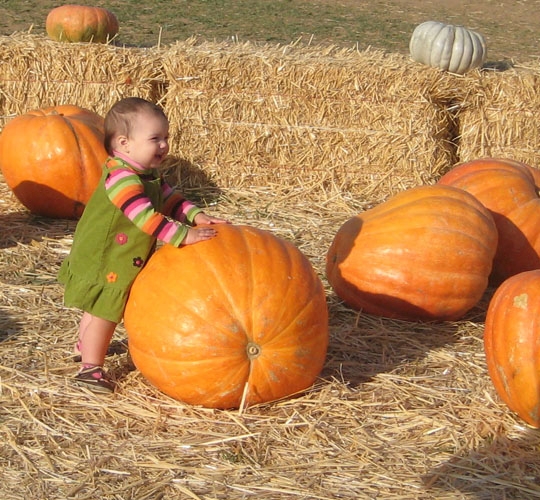UC Food and Agriculture Blogs
Bagrada bug continues to spread in California
The Bagrada bug (Bagrada hilaris) is an invasive stink bug insect that was first reported in 2008 in Los Angeles County, California. It has now spread to several counties in California and is moving northward in the state. Bagrada bug is also...
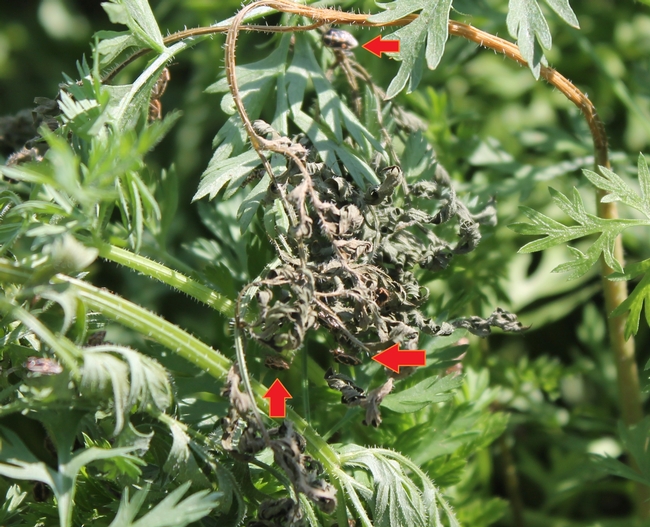
Damage to carrots from Bagrada bug feeding. (Photo by Rick Machado, Menifee)
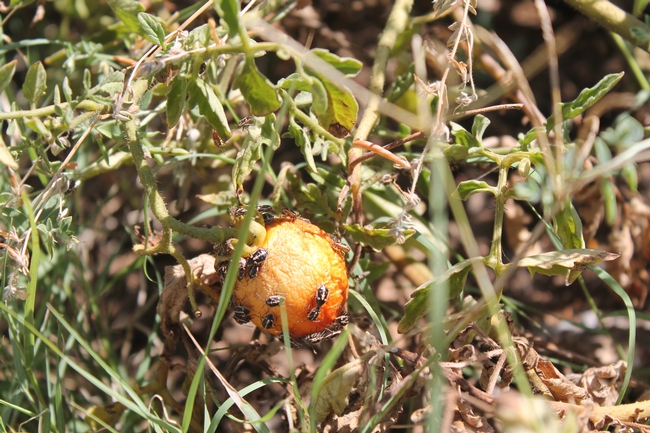
Bagrada bug feeding damage to tomatoes. (Photo by Rick Machado, Menifee)
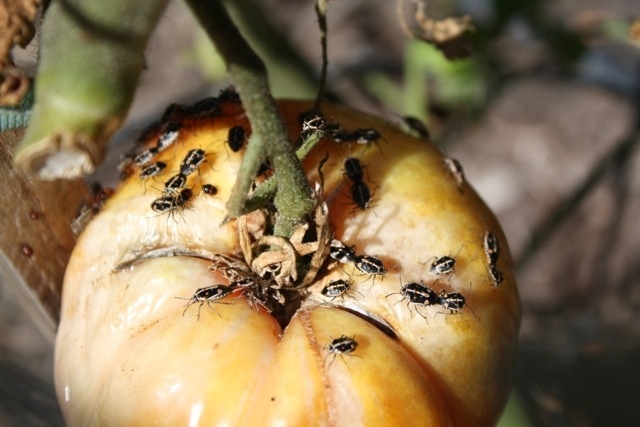
Bagrada bug feeding damage to tomatoes. (Photo by Jennifer Evangelista, San Luis Obispo)
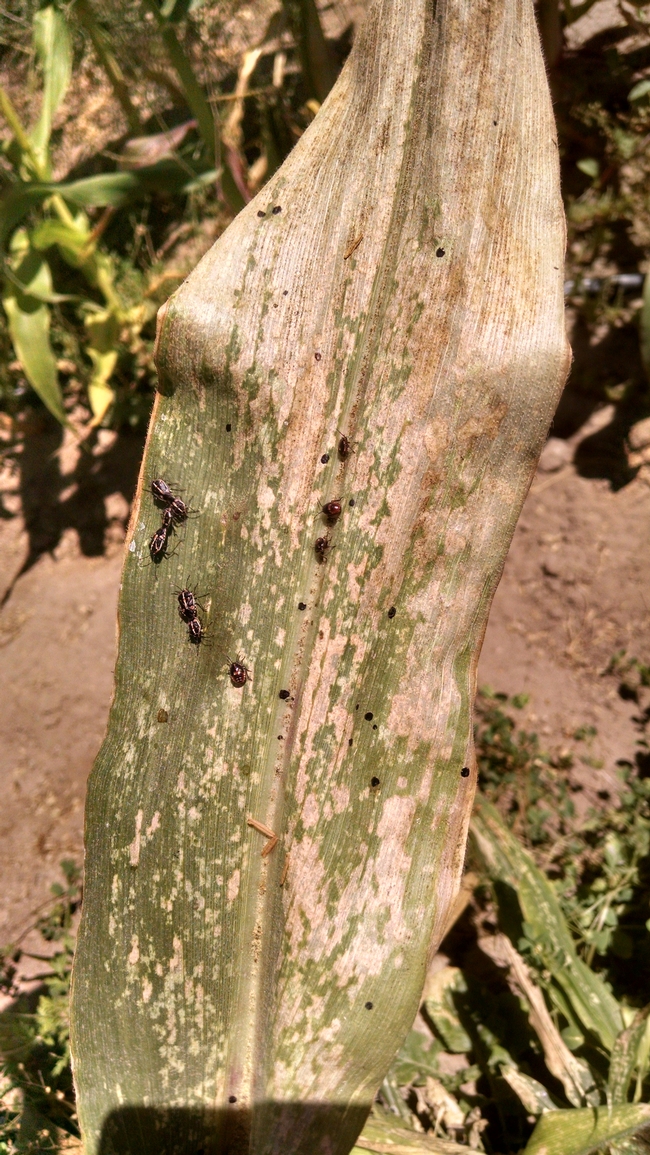
Backyard corn damaged by Bagrada bugs. (Photo by Larry Adcock, Arroyo Grande)

Bagrada bugs on strawberry foliage. Not seen to cause any feeding damage. (Photo by Jennifer Evangelista, San Luis Obispo)

Stippling and eventual necrosis of damaged tissue in chiko burdock. (Photo by Don DeLano, Pomona)
It's October - Take the kids to a farm!
Before Halloween comes the harvest festival and the pumpkin patch.
Although most of us don't live on farms or have relatives who farm, the shortening days and the crispness in the air still remind us somehow that it's harvest time. All over California, farmers are opening their gates and sharing their harvest celebrations with the rest of us. What better time to make sure the kids know where pumpkins, corn, and everything else they eat comes from?
Here are some family-friendly harvest celebrations coming up soon:
- Sierra Oro Farm Trail Passport Weekend, Butte County - Saturday & Sunday, Oct. 11, 12
Passport holders can set their own pace, take self-guided tours of the scenic agricultural trails, meet local farmers and winemakers and sample the amazing bounty of locally-owned wineries and specialty farms located throughout Butte County. - Shone Farm Fall Festival, Santa Rosa - Saturday, Oct. 11
The festival, which marks the Farm's 42nd year, will include activities such as apple pressing, a rotten tomato slingshot game, pumpkin and vegetable picking, hayrides and tours of the 365-acre farm and forest. Santa Rosa Junior College Agriculture & Natural Resources Department students will demonstrate wood milling, compost making, lead tours and introduce visitors to the farm's horses, sheep and chickens, and talk about their upkeep. In addition, children can have their faces painted and make stick horses and other crafts. This free festival runs from 11 a.m. – 3 p.m. on Saturday, Oct. 11. The farm is located at 7450 Steve Olson Lane, Forestville. For more information, visit shonefarm.com. -
Stehly Farms Organic Pumpkin Patch, San Diego - Sunday, Oct. 12
Kids are back in school, the nights are (hopefully) getting cooler, and fall is here! What better way to celebrate than some pumpkin picking? Pumpkin Picking. Tractor Rides. Farm Stand. Devil Dogs BBQ. Market Juices. All Ages Welcome! $6, Kids 4 and Under Free - Farm & Barn Tour, Placer County - Sunday, Oct. 12
The whole family will enjoy the PlacerGROWN Farm & Barn Tour, a FREE self-guided expedition of farms, ranches, and vineyards in the beautiful countryside of Placer County. Each farm venue will feature different activities, tours, and demonstrations. Locally grown produce, meats, wine, and more will be available for purchase. Learn more
- PlacerGROWN Harvest Festival, Rocklin - Saturday & Sunday, Oct. 18, 19
Don't miss the PlacerGROWN Harvest Festival, a FREE event of family fun including a pumpkin patch, pumpkin lighting display at dusk, movie in the park, scarecrow building contest, farmers' market and more.
- Work Day & Barn Dance, Pescadero - Saturday, Oct. 18
Celebrate the spirit of community with Pie Ranch at this monthly ritual of touring or working together on the ranch, sharing locally grown food, and then spinning, laughing and dosey-doing together into the night. - Marin Agricultural Land Trust (MALT) Day at the Pumpkin Patch, Nicasio - Sunday, Oct. 19
Pick an organic pumpkin, make your own cheese, taste local Marin wine and beer, pick up locally sourced sandwiches, salads and burgers from The Farmer's Wife and Stemple Creek Ranch, and let the kids go crazy with crafts at MALT Day. This event is free and open to the public. - Live Earth Farm Harvest Festival, Watsonville - Saturday, Oct. 25
Celebrate the Bounty of the Pajaro Valley and the Monterey Bay Area! Join us for fun on the farm for the whole family. Honor the changing of the seasons and celebrate the Harvest with us on the farm.
These and many more farm and ranch events can be found on the UC Agritourism Directory, www.calagtour.org, managed as a public service by the UC Small Farm Program.
Have fun!
The Biology of Farm Size
For those of us in the local food movement, size does seem to matter when it comes to farms and ranches. Smaller, family-operated farms are the darlings of the burgeoning farm-to-fork effort - and with good reason. Smaller farms and ranches...
Bed Bug Monitors
[From the December 2012 issue of the UC IPM Retail Nursery & Garden Center News] After decades of relative obscurity, bed bugs (Figure 1) are exhibiting a global resurgence. In the United States, the Northeast and Midwest regions have been...
UC IPM's Resources in Spanish
National Hispanic Heritage Month (September 15 – October 15) celebrates the contributions, culture, and history of Hispanic and Latino Americans originating from Spain, Mexico, Puerto Rico, Central America, and South America. These Americans make...




